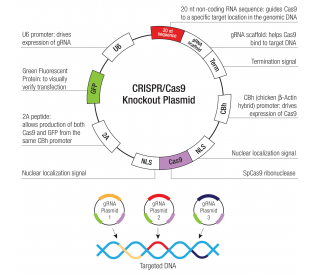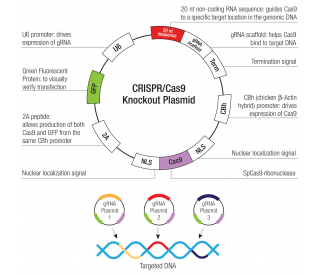详细说明
Purity
>95%, by SDS-PAGE under reducing conditions and visualized by silver stain
Endotoxin Level
<1.0 EU per 1 μg of the protein by the LAL method.
Activity
Measured by its ability to hydrolyze the substrate 4-Nitrocatechol Sulfate (PNCS). The specific activity is >100 pmol/min/µg, as measured under the described conditions. See Activity Assay Protocol on .
Source
Mouse myeloma cell line, NS0-derived Ser18-Ser506, with a C-terminal 10-His tag
Accession #
N-terminal Sequence
AnalysisSer18
Predicted Molecular Mass
54 kDa
SDS-PAGE
60 kDa, reducing conditions
2858-SU |
| |
Formulation Supplied as a 0.2 μm filtered solution in Tris and NaCl. | ||
Shipping The product is shipped with polar packs. Upon receipt, store it immediately at the temperature recommended below. | ||
Stability & Storage: Use a manual defrost freezer and avoid repeated freeze-thaw cycles.
|
Assay Procedure
Materials
Assay Buffer: 50 mM Sodium Acetate, pH 5.0
Recombinant Mouse Arylsulfatase A/ARSA (rmARSA) (Catalog # 2858-SU)
Substrate: 4-Nitrocatechol Sulfate (PNCS) (Sigma, Catalog # N-7251), 100 mM stock in diH2O
0.2 M Sodium Hydroxide
96-well Clear Plate (Costar, Catalog # 92592)
Plate Reader (Model: SpectraMax Plus by Molecular Devices) or equivalent
Dilute rmARSA to 20 µg/mL in Assay Buffer.
Dilute Substrate to 2 mM in Assay Buffer.
Combine in triplicate 75 µL of 20 µg/mL rmARSA and 75 µL of 2 mM Substrate. Include a Substrate Blank containing Assay Buffer in place of rmARSA.
Incubate reactions for 30 minutes at 37 °C.
Stop reactions by adding 150 µL 0.2 M sodium hydroxide to each for a final concentration of 0.1 M sodium hydroxide per reaction.
Load into a clear 96-well plate 200 µL from each reaction vial.
Read at 510 nm (absorbance) in endpoint mode.
Calculate specific activity:
Specific Activity (pmol/min/µg) = | Adjusted Abs* (OD) x Conversion Factor** (pmol/OD) |
| Incubation time (min) x amount of enzyme (µg) |
*Adjusted for Substrate Blank
**Derived using calibration standard 4-Nitrocatechol (PNC) (Sigma, Catalog # N15553).
Per Well:
rmARSA: 1 µg
Substrate: 0.5 mM
Background: Arylsulfatase A/ARSA
As a member of the sulfatase family, arylsulfatase A is encoded by the ARSA gene and required for the lysosomal degradation of cerebroside-3-sulfate, a sphingolipid sulfate ester and a major constituent of the myelin sheet (1). ARSA deficiency results in metachromatic leukodystrophy (MLD), a lysosomal storage disease in the central and peripheral nervous systems with severe and progressive neurological symptoms (2). The deduced amino acid sequence of mouse ARSA consists of a signal peptide (residues 1-17) and a mature chain (residues 18-506) (3). Recombinant mouse ARSA corresponds to the mature chain and has sulfatase activity as described in Activity Assay Protocol.
References:
Lukatela, G. et al. (1998) Biochemistry 37:3654.
Parenti, G. et al. J. (1997) Curr. Opin. Genet. & Dev. 7:386.
Kreysing, J. et al. (1994) Genomics 19:249.
Entrez Gene IDs:
410 (Human); 11883 (Mouse)
Alternate Names:
ARSA; Arylsulfatase A; ASA; Cerebroside 3-sulfatase; Cerebroside-sulfatase; EC 3.1.6; EC 3.1.6.8; MLD







![Anti-CARD11 antibody [EPR2557] 100µl](https://yunshiji.oss-cn-shenzhen.aliyuncs.com/202407/25/ryuecwsu03m.jpg)
![Anti-CARD11 antibody [EPR2557] 40µl](https://yunshiji.oss-cn-shenzhen.aliyuncs.com/202407/25/0l4lvuuesv1.jpg)

![Anti-Caspase-9 antibody [E23] 100µl](https://yunshiji.oss-cn-shenzhen.aliyuncs.com/202407/25/3jnd4412gqi.jpg)

![Anti-CKS2 antibody [EPR7946(2)] 100µl](https://yunshiji.oss-cn-shenzhen.aliyuncs.com/202407/25/cfdt44gkqre.jpg)



 粤公网安备44196802000105号
粤公网安备44196802000105号